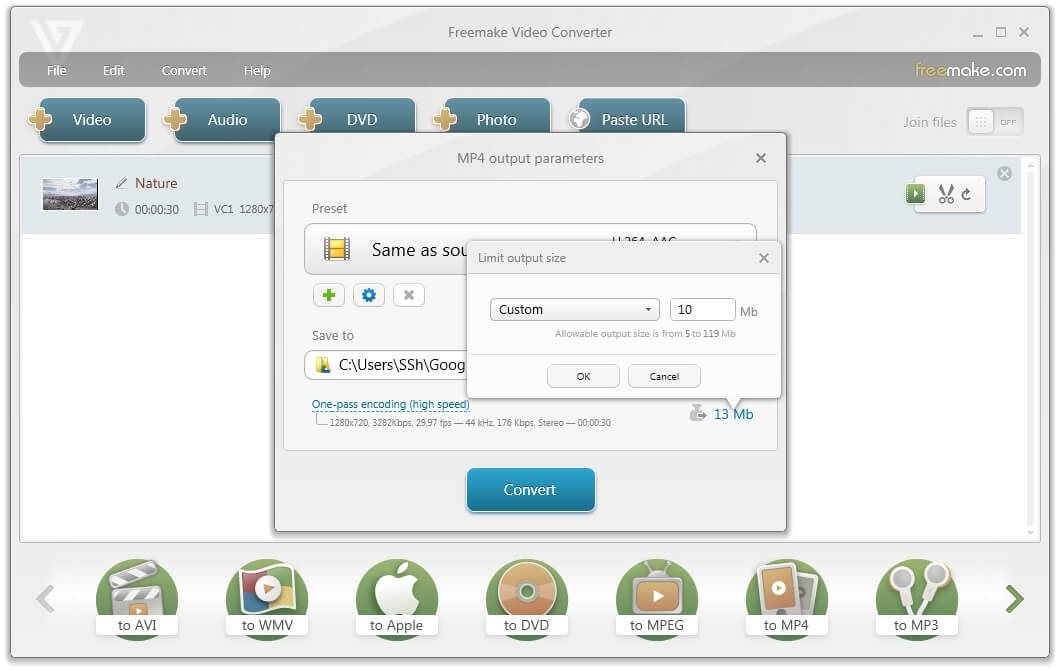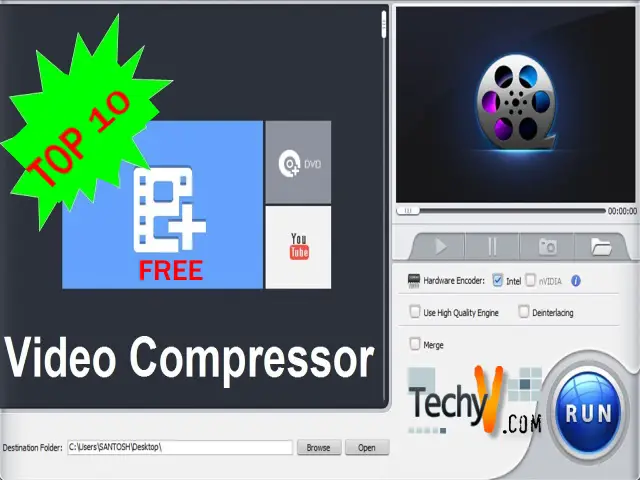

- #Video compressor software for mac#
- #Video compressor software movie#
- #Video compressor software software#
- #Video compressor software code#
- #Video compressor software zip#
Sometimes you need to know which codec to choose, so it's helpful to know the following types of codec: What you need to know is that, without codecs, your file size would be at least three to five times larger.
#Video compressor software software#
If you need to convert a video's codec, you can use transcoding software such as Handbrake.

Codecs usually work automatically within the program of your choice, so you shouldn't need to worry about them. They essentially shrink your file down for storage and then decompress them again when you're ready to view them.

#Video compressor software code#
So, essentially, if your file is in the gigabyte range, you'll want to get it down to the megabytes.Ĭodecs are the code used to compress your video. Generally, you'll see files measured in kilobytes, megabytes, gigabytes and terabytes: What's a byte?Ī byte is a unit of measurement used for digital files. Alternatively, you can upload your uncompressed video into Dropbox and share without worrying about compression. If the video is long, it will take a very long time to compress, so you can waste a lot of time if you export as the wrong file format. Most video editing programs will let you choose your resulting file format, including MP4, AVI, MOV, and WMV. These programs require you to open your video, usually by clicking "open" or "import." Then, exporting converts them to a new file type.
#Video compressor software zip#
Alternatively, you could send your video in a ZIP compressed file, but this will require your recipient to download it on their end.
#Video compressor software for mac#
Most video editing programs, such as iMovie for Mac or Windows Video Editor for Windows, come with a built-in video compressor. This is when things start getting "pixely," "grainy," and generally not viewable. You'll only start to see compression wreak havoc on display quality if you want to shrink a file down to a tiny file size while maintaining resolution.
#Video compressor software movie#
Think about how a Hollywood movie goes from cinema screen size to a DVD, playing on any home TV without lag.

To the human eye, this loss is hardly noticeable. Video compression occurs by removing repetitive images and sounds as determined by the codec algorithm. Depending on the original size, this quality loss may not be noticeable, but that all depends on how small you need your video file size. However, it usually means overall quality takes a hit. Essentially, compressing your video cuts a chunk off the size needed by your file. That means your video won't fit into your message, or your recipient can look forward to a lengthy download period on their end. Unfortunately, almost all file sharing methods, from email to instant messaging, have file size limits. Video compression is a way of shrinking your video file size. Compressing your videos solves this problem. Sharing high-quality videos between teams and clients can be frustrating since video files size are bulky at the best of times. Selecting a region changes the language and/or content on is a wonderful thing, but there are still some things that can make even the most tech-savvy person get a little anxious. You can reduce the file’s resolution or data rate to help with this. If you’re uploading video content, you want to publish the best video quality possible at a size that’s accessible to the largest possible audience. While some large high-resolution files might play well on high-quality PCs, creators of video content also have to remember many people watch videos on smartphones, older PCs, or with slower Wi-Fi or cellular connections. But if you plan to host the video yourself or want it smaller to share the file more easily, reducing the size of video files is helpful for your audience. Most social sites like Facebook and YouTube will make your video smaller for playback across a variety of devices when you upload. Then, when you export, Media Encoder will automatically switch back to using your high-resolution sources. Compress video files to a more manageable format like MP4, helping make your workflow more efficient. You might create proxy files, which use a lower data rate but maintain the aspect ratio, for a smoother editing experience. Many video files, like those from a high-end camera, are large and can demand a lot from your machine while you edit, whether you work in Windows or on a Mac. If you are working with high-resolution source files, such as 4K video, reducing the file size of videos also saves time in production.


 0 kommentar(er)
0 kommentar(er)
